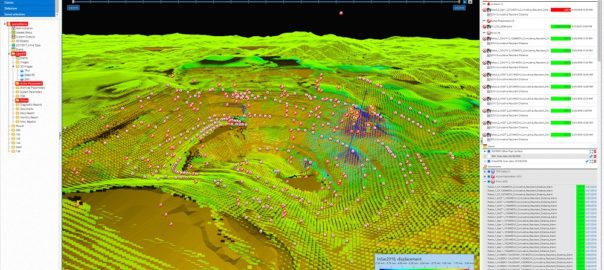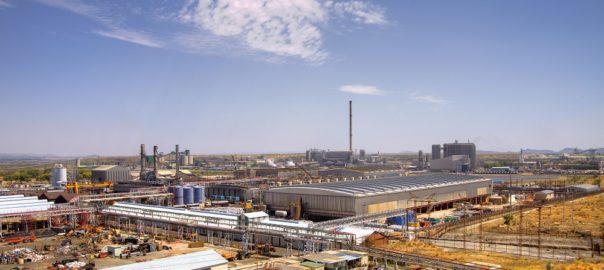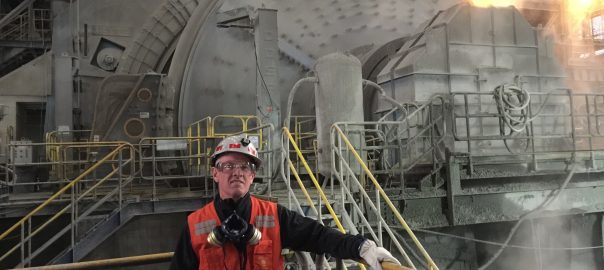The preliminary technical programme for the APCOM 2019 conference in Wroclaw, Poland, (June 4-6) has gone live, showing off some of the highest quality peer-reviewed papers on ‘digital transformation’ in mining, from resource estimation to mine operation and safety.
The conference topics include:
Geostatistics and resource estimation
APCOM said: “An entire three-day conference stream provides more than 20 leading- edge and peer-reviewed papers by world-class practitioners from leading mining companies and by world-leading research institutes.”
Papers on this topic include: Transforming Exploration Data Through Machine Learning from MICROMINE’s Mark Gabbitus, Rock mass characterisation using MWD data and photogrammetry from Luleå University of Technology’s Sohail Manzoor, and Rethinking Fleet & Personnel Management in the era of IoT, Big Data, Gamification, and low-cost Tablet Technology from MST Global’s Sean Dessureault.
Mine planning
There will be about 15 papers on newest IT-supported techniques in mine planning, uncertainty reduction, geomechanics, modelling, simulation and the most recent software technology, according to APCOM.
Papers on this topic include: A procedure to generate optimised ramp designs using mathematical programming from Delphos Mine Planning Lab, AMTC/DIMIN, Universidad de Chile’s Nelson Morales, Incorporation of geological risk into underground mine planning from NEXA Resources’ Rafael Rosado and a presentation from AngloGold Ashanti’s Andrade Barbosa titled, Economic Optimisation of Rib Pillars Placement in Underground Mines.
Scheduling and dispatch
“Around 15 papers address long- and short-term scheduling optimisation, the application of neural networks and genetic algorithms as well as risk mitigation and related software systems. A keynote talk covers the impact of Internet of Things (IoT), Big Data and gamification on fleet scheduling topics,” APCOM said.
The conference has attracted speakers on this subject from Clausthal University of Technology, AngloGold Ashanti, University of Alberta, AusGEMCO Pty Ltd, Newmont Mining Corp, Advanced Mining Technology Center and Maptek.
Mine operation in digital transformation
There are more than 20 papers in this stream covering mining equipment related topics in the area of LHD transport, drilling and longwall operation, as well as underground communications and new digital technologies in mine safety, as well as product quality optimisation.
Speakers from the Kola Science Centre of the Russian Academy of Sciences (Breakline and breakdown surfaces modelling in the design of large-scale blasts), Komatsu Mining (The Digital Mine eco-system), Tunnel Radio (Hybrid 5G Fibre Optic/Leaky Feeder Communication System) and Epiroc (Monitoring of a stoping operation, digital transformation in practice) are set to present papers
Emerging technologies and robotics in mining
Under this topic, there are a number of sessions with almost 10 papers covering the use of unmanned aerial vehicles (UAV) in mining, the benefits of upcoming technology in robotics, mechatronics and communications, as well as the changes in machine design through digital transformation, APCOM said. Also a completely new transport system is presented in this stream.
Papers in this stream include: More Safety in Underground Mining with IoT and Autonomous Robots (TU Bergakademie Freiberg, Institute of Mining and Special Civil Engineering), Application of UAV imaging and photogrammetry for high-resolution modelling of open pit geometry and slope stability monitoring (Department of Mining and Metallurgical Engineering, University of Nevada, Reno) and The concept of walking robot for mining industry (Faculty of Mechanical Engineering, Wroclaw University of Science and Technology).
Synergies from other industries
A plenary speech from an active airline captain will lead this session, talking about the impact of human-machine interfaces on decision-making of automated equipment and in control centres, APCOM said. Other papers will be on the transferability of building information modelling from commercial construction to mining.
A paper from MT-Silesia Sp zoo called: From machine construction to mechatronic system design: Digital Transformation is changing the way of thinking! is included. There are also talks from MobileTronics GmbH’s George Biro on, Rethinking mining transport: Trackless trains for mass transport in mining and KGHM Polska Miedeź’s Mariusz Sangórski presenting, Energy Management System Maturity Model – Systematic Approach to Gain Knowledge about Organization’s Real Engagement in Energy Efficiency Area.
The conference takes place at the convention centre of the Wroclaw University of Technology and is accompanied by an exhibition, APCOM said. A social programme, conference dinner with entertainment and partner activities are available as well as field trips on June 7.
“A post-conference hike in the Karkonosze Mountains is offered from June 8-10, with overnight stays in two microbreweries on the ridge, is a relaxing finish to the technical discussions of the week,” APCOM said.
All presentations are to be held in English. Simultaneous translation to Polish is provided if requested by a sufficient number of participants.
International Mining is a media partner for APCOM 2019.












